I Tried It: Harvesting Honey at a Myakka Apiary
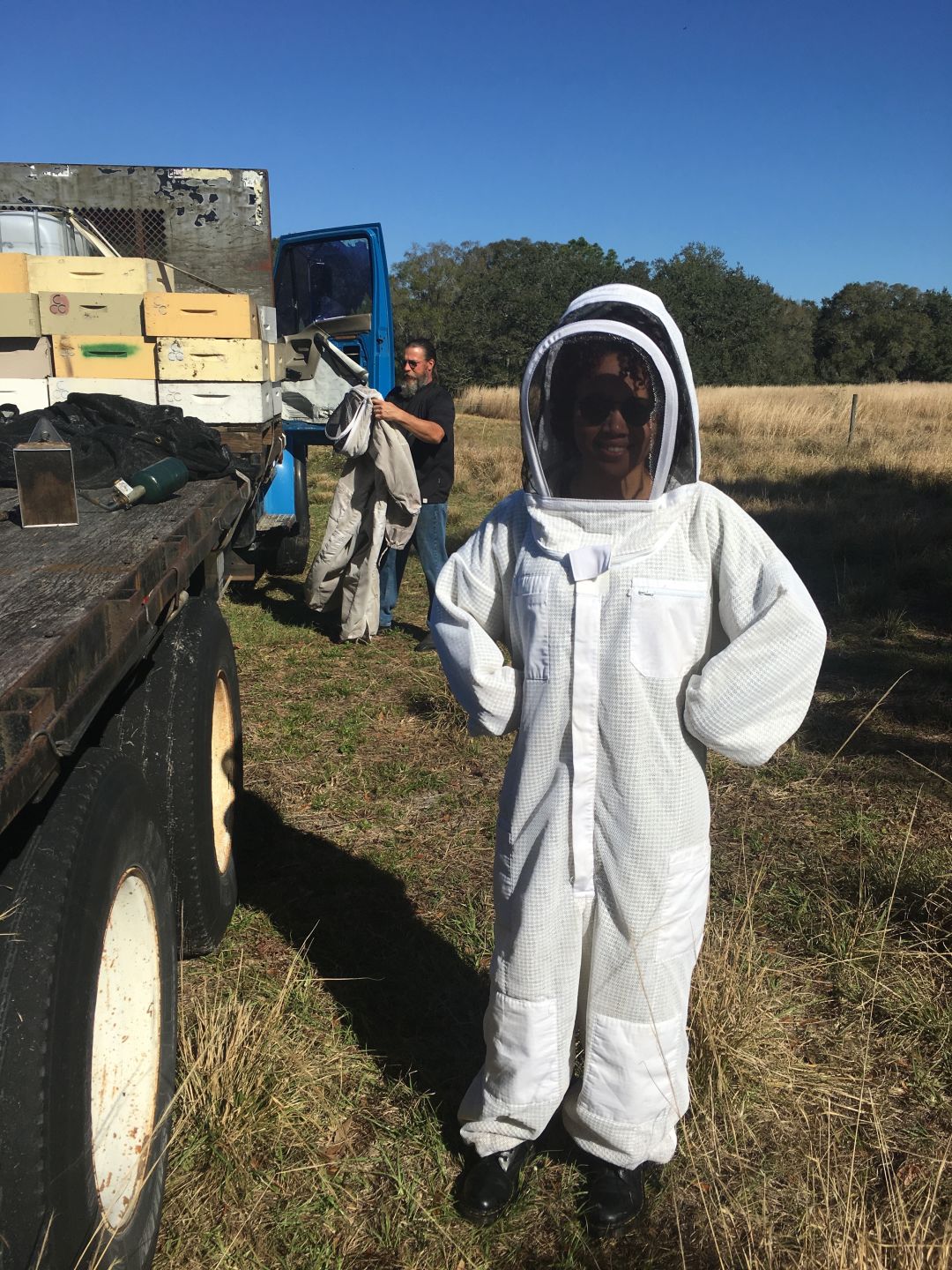
All suited up and ready to harvest honey.
One sunny Sunday morning in February, I headed out to Myakka to meet Jim Cutway of Myakka’s Gold Apiary so we could harvest honey. Cutway, a beekeeper, specializes in raw honey, which is believed to have health-boosting enzymes, help with allergies and be anti-viral and anti-bacterial. He sells his honey at local markets in the Sarasota-Manatee region.
"The more informed the public can be about bees," Cutway says, "the better it is for them."
Shaded by towering trees and hanging Spanish moss, we drove down a dirt road and arrived at a field parallel to an citrus grove. We began by putting on the bee suits--flexible but thick white onesies. with screened masks and many zippers. Since I don’t normally bee-keep, I wore my black leather Doc Martens, too, and they worked well. (Besides, there is something punk about immersing yourself in a beehive.) Cutway, meanwhile, carried a smoker with a hand pump.
“The smoke simulates a wildfire,” Cutway explained. “It causes the bees to eat more.” The bees gorge themselves when exposed to the smoke; they then become tired and less agitated.
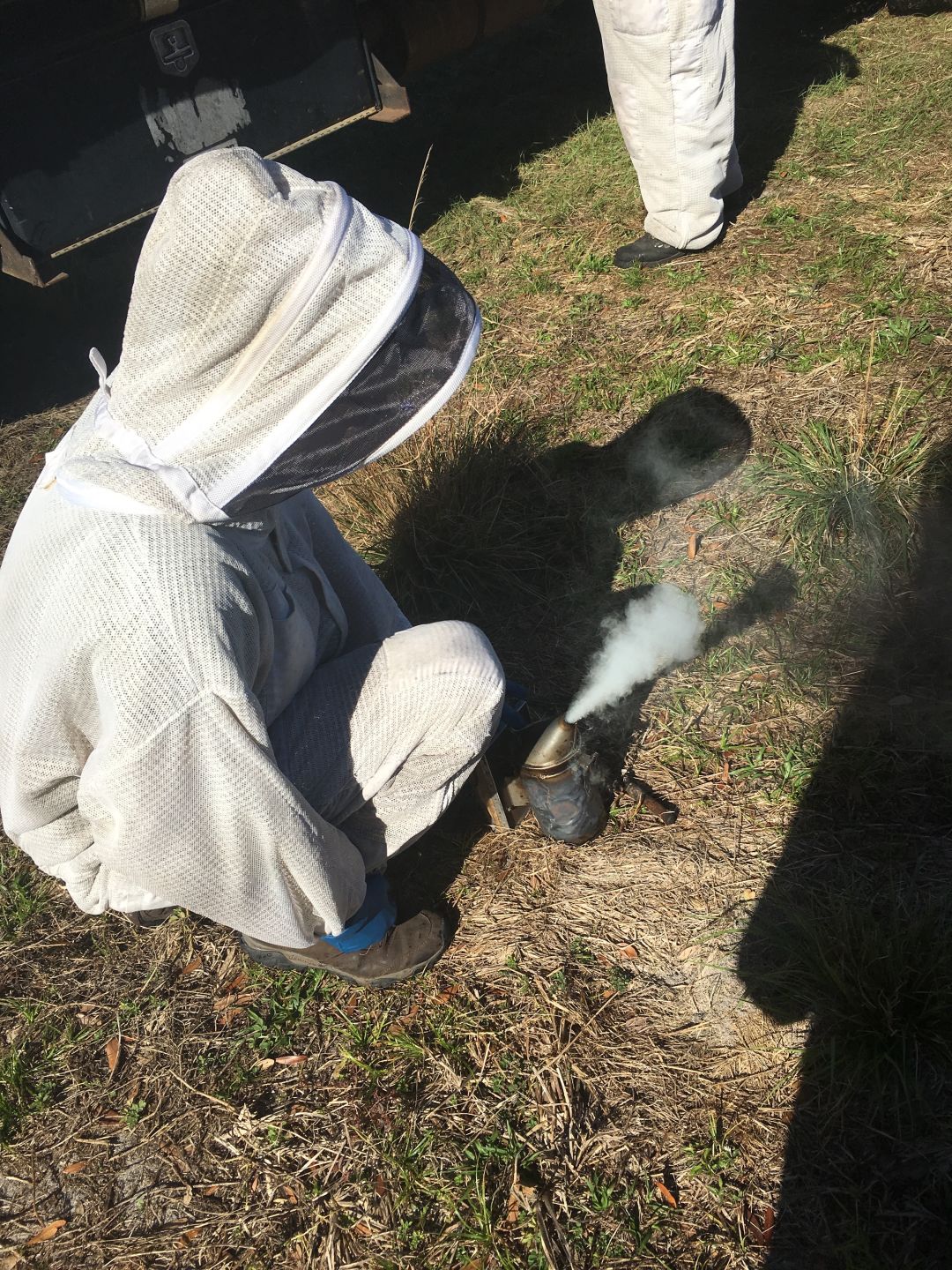
As we were harvesting honey, I noticed that every hive behaved slightly differently. Some were less concerned with us than others. “That has to do with the personality of the hive,” Cutway explains. “They are all girls.”
Actually, I learned that about 95 percent of a hive is female, while the rest are male drones. In the hive where they where they were growing a new queen, the bees darted about wildly. In addition to his hives in Myakka, Cutway also has some near the Manatee and Braden rivers. The honey holds the flavor of the area where the bees collect pollen.
“Our bees produce orange blossom, palmetto, mangrove, wildflower and Brazilian pepper honey,” Cutway says. “We also have feral bee honey from time to time. We also do bee relocation when someone has bees in their house, shed, water meter box etc."
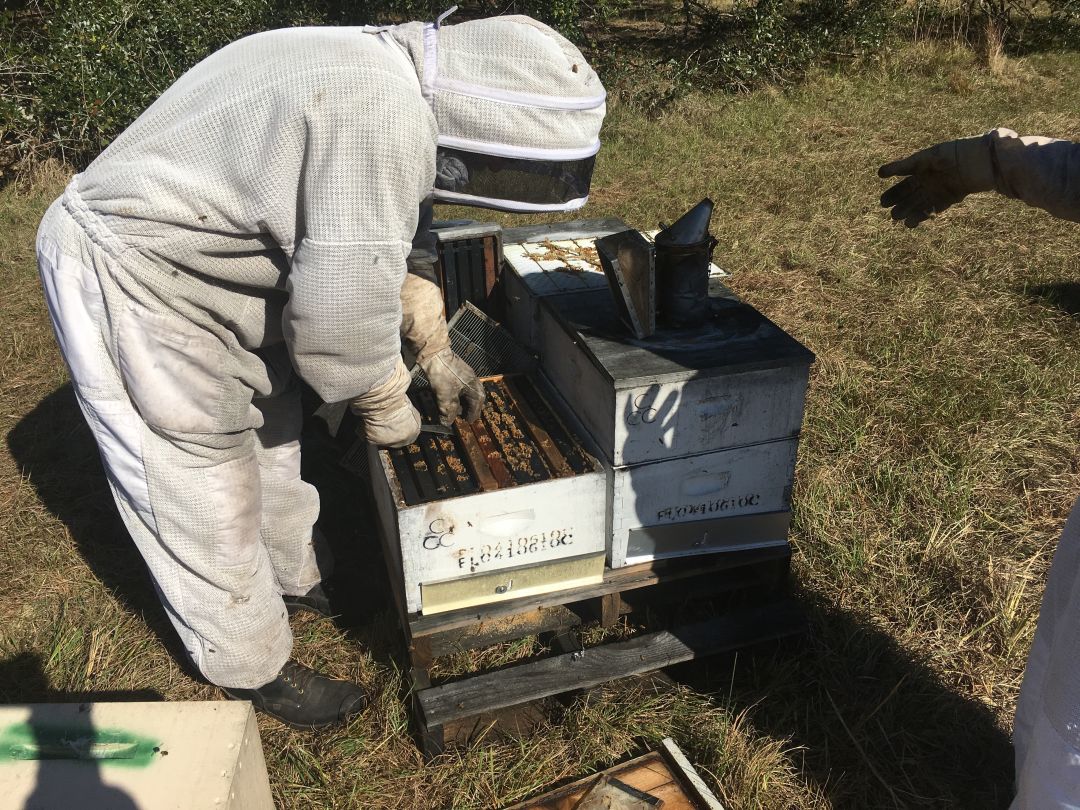
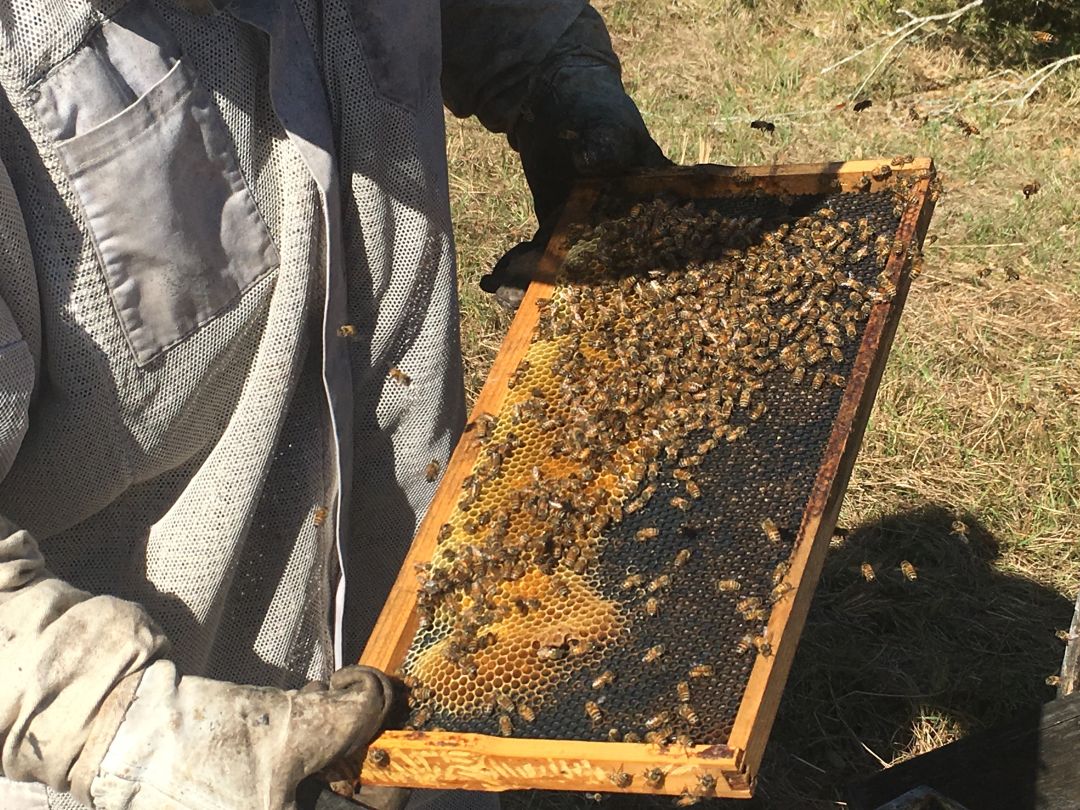
But honey is not the only product that come from the hives. “We have lip balm, facial scrubs, candles and beeswax, all containing our honey or wax,” Cutway tells me.
The honey is available at Scuba Quest in Bradenton and Sarasota, The Barefoot Market in Myakka City, Manatee Family Pharmacy in Bradenton, Paul and Frankie's restaurant in Bradenton, and a new spot: Mermaid Pies and Produce in Cortez. “I also personally bring it to the Central Sarasota farmers market along with a few other venues that we post on Facebook,” Cutway says.
While at the apiary, Cutway showed me four hives in different stages of production and reproduction. We even saw a bee beginning the process of hatching. (At one point, I became so engrossed in the bees, that I pressed my face to the mask and got stung. I spent two days with an asymmetrically swollen face, but the experience was well worth it.)
Usually, bees are born and spend four weeks working in the hive, then four weeks collecting pollen outside in their pollen sacs. They live longer when nectar is not as readily available--up to four months in the winter. “They will literally work themselves to death,” Cutway says.
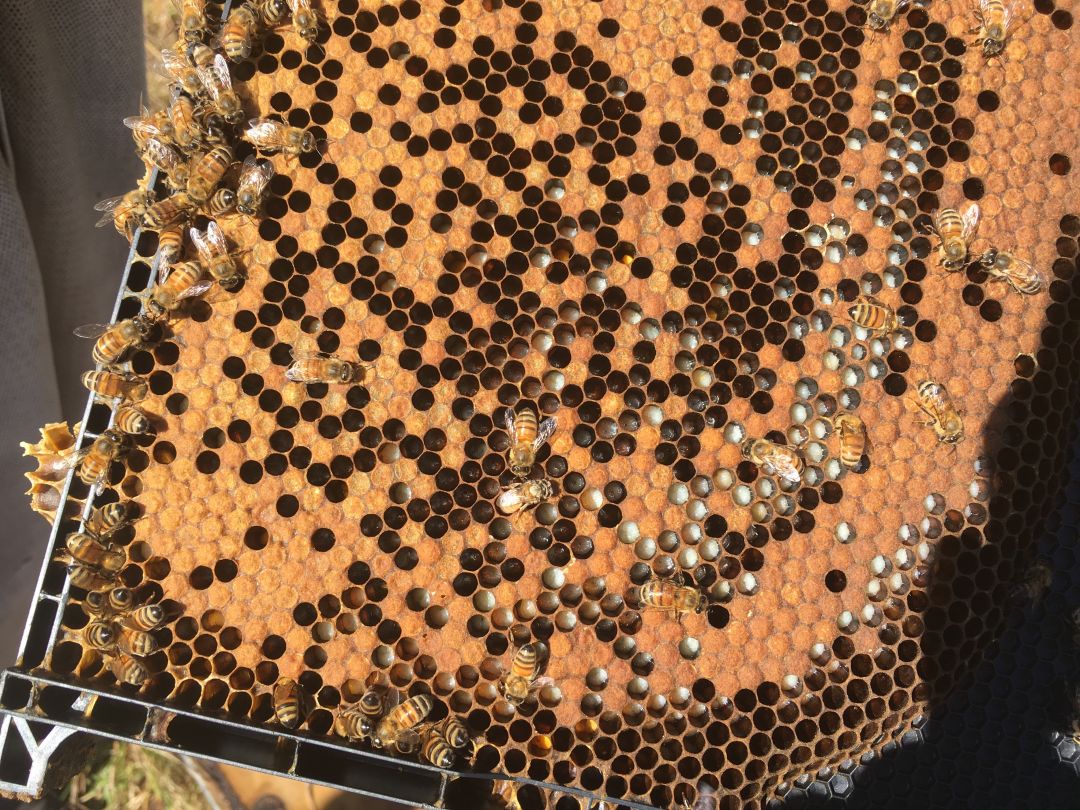
Queen bees are bigger than the others, since they are raised on a diet of royal jelly and can live much longer. Their main job is to reproduce. “It’s documented that there was one queen who lived to be 17 years old,” Cutway recalls.
Cutway is incredibly attentive to his bees. He says he often spends whole nights moving them. Still, he admits that without him, the bees would carry on just fine.
“Mother Nature is pretty good about that stuff,” he says.
Check out Myakka’s Gold Apiary at on Facebook or email [email protected].



